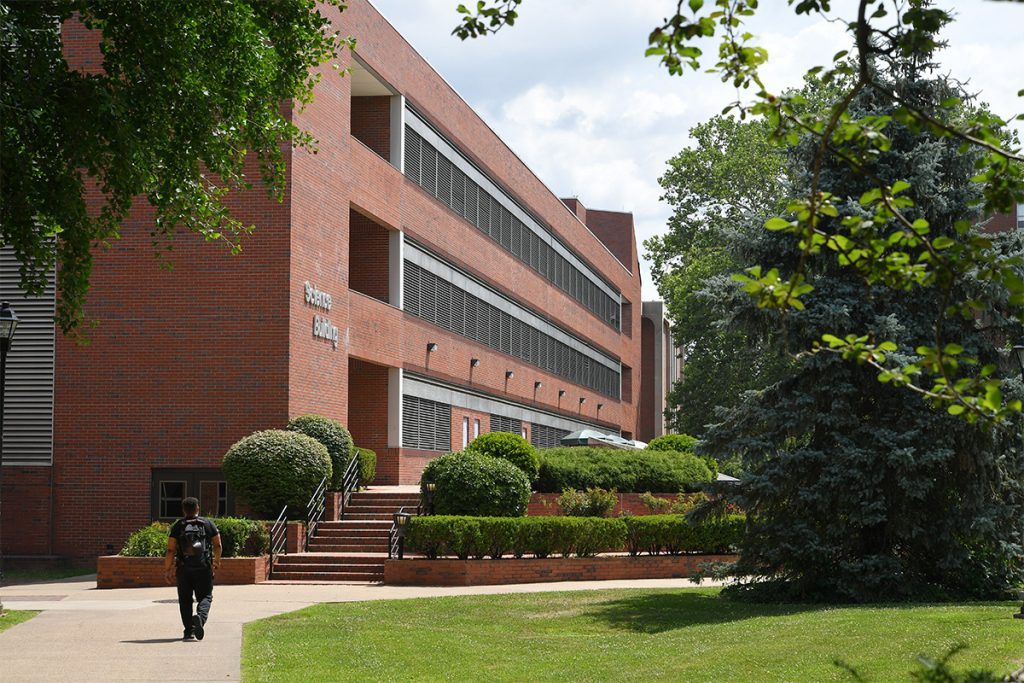Above: Marshall University Science Building
When Marshall University students are working in the microbiology teaching lab in the Department of Biological Sciences, they’ll now be able to capture images of their samples and download them using tablets that are attached right to the microscopes themselves. These new, state-of-the-art Panthera E2 Trinoc Compound microscopes are game-changers for scientists, said Dr. Wendy Trzyna, a professor in the Department of Biological Sciences.
“These microscopes are Motic’s highest-end educational microscope,” Trzyna said. “What makes them extra special is the addition of an attached camera and tablet, which allows students to capture images of their samples, which they can then download and save for later analysis, and to add to their notebooks and assignments.
“Even more exciting is the software, which allows the students to share their images in real time with my computer during the lab session,” she continued. “This allows me to evaluate their work on the spot and provide immediate feedback to enhance their learning. These images can also be shared with the class, allowing students to learn from each other. These ‘teachable moments’ help students to know what they are expecting to see in their own samples — bacteria or cells, and not air bubbles or dust.”
The interactive features will allow for a more thorough evaluation of the students’ work, in addition to adding a level of accountability on the part of the student, Trzyna said, adding that Marshall became the first institution in the state to offer this particular learning tool of Motics for students.
She first saw the microscopes at a conference of the American Society for Microbiology. Knowing they’d be an excellent tool for Marshall students, she pitched the idea of purchasing some to a group of Marshall University supporters, who then set about arranging for funding.
“Our students have been very enthusiastic about being able to use this top-of-the-line laboratory instrument during classes,” Trzyna said. “I have observed an increased level of engagement on the part of the students. Many have expressed to me how much they look forward to and enjoy this lab. It is a joy to hear the students say how ‘cool’ these new microscopes are!”
Marshall microbiology courses serve over 300 students per year. Students taking these courses are biology and other science majors, as well as health science students. Among these students are those preparing for medical and other professional schools, nursing and pharmacy careers, and other health professions.
